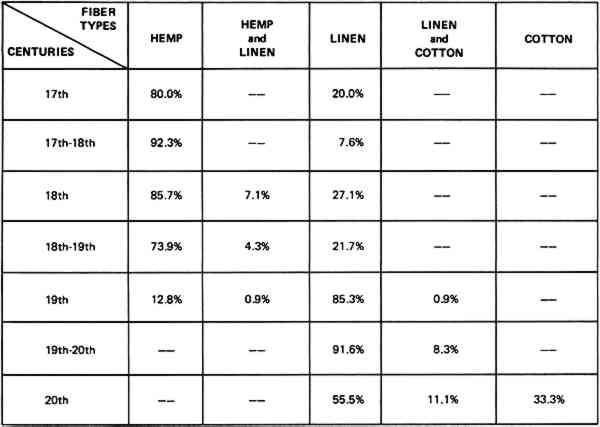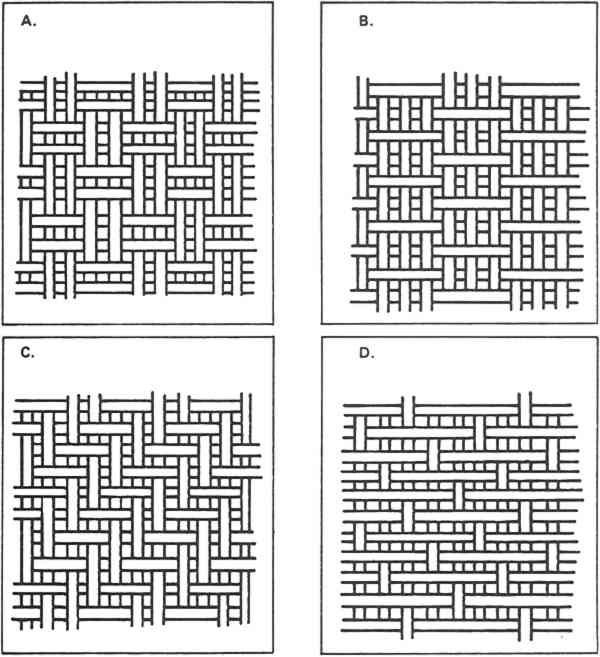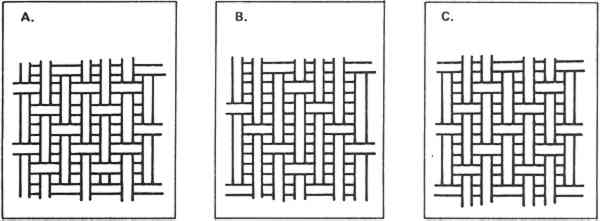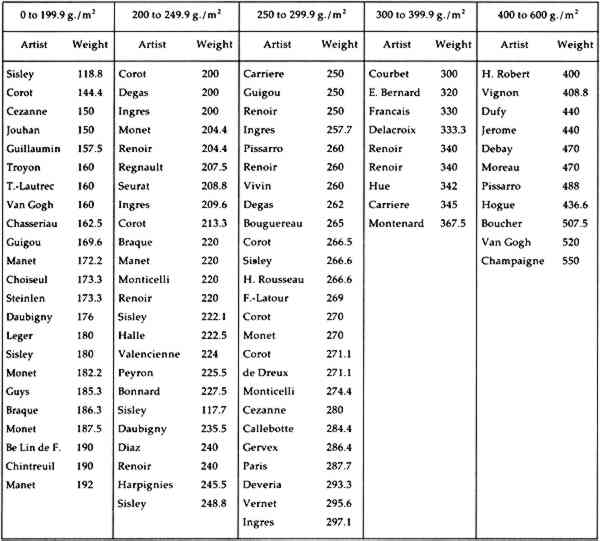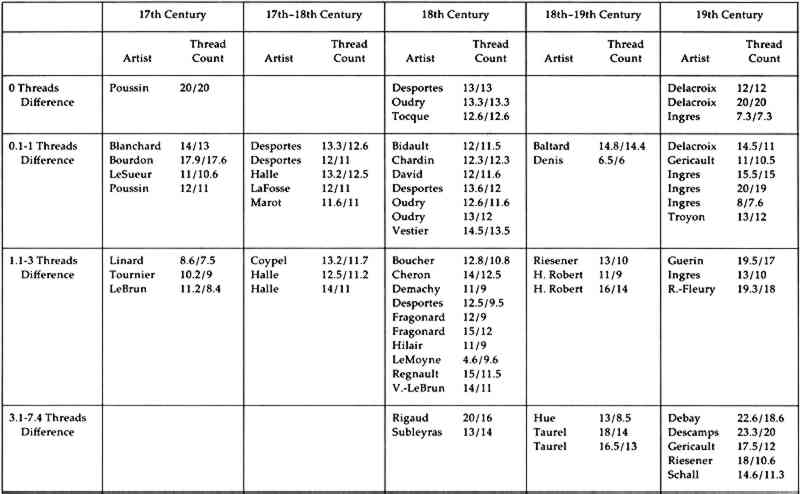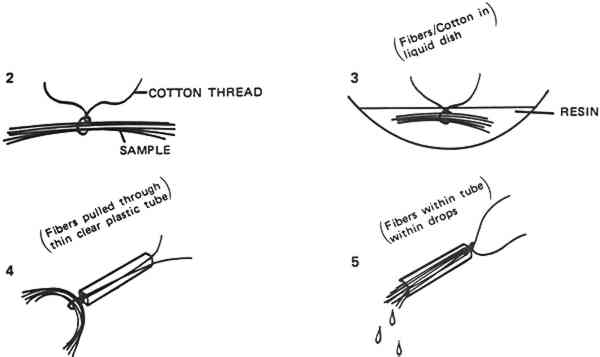A STUDY OF FRENCH PAINTING CANVASESKatrina VANDERLIP CARBONNEL
3 PART II3.1 FABRIC CHARACTERISTICS3.1.1 FIBER TYPESTHE THREE FIBER types found in this study of French painting canvases are hemp, linen or flax, and cotton, which were used through the centuries in that order. Figures 1, 2 and 3 show this transition from the use of hemp to the use of linen and finally to the use of cotton. Cotton is easily recognized because it looks like a twisted ribbon under the microscope, unlike hemp and linen which look like bamboo.
Linen and hemp have often been confused as the two fibers can only be properly identified by examining their cross-section under the microscope. All the samples studied were identified using the method described by M. C. Gay and R. Monrocq in “Identification des Fibres Textiles Naturelles par Examen Microscopique,” Annales du Laboratoire de Recherche des Mus�es de France, 1972, p. 16–22 (see Fig. 4 and the Appendix). The change over from the use of hemp painting canvases to the use primarily of linen fabrics was probably effected without the artists of that period really realizing it themselves.
When the production of hemp fell in the early 19th century, that of linen took over for the fabrics that had been hemp. There are two grades of linen, a fine one used for voiles, laces, and delicate linens and a less noble grade made into cleaning rags, dish towels, sacks, and canvases. The coarser linen fibers look and feel just like hemp fibers when spun and woven into cloth. Hemp can even be refined and bleached whitish, to resemble high-quality linen; but this takes painstaking efforts, and hemp is most often found in its coarser state. Finely woven linen canvases such as those associated with the impressionists are found well after the switch from hemp to linen had taken place. During the transition period in the early 19th century, the artists' canvases are either coarse-grade linen or hemp, two similar fabrics. French artists did not adopt cotton canvases as readily as they had linen ones. But even at the beginning of the 19th century, the Industrial Revolution and the large production of cotton in the United States started to erode away the popularity of linen, more time consuming and costly to produce. French painters had traditionally painted on strong and durable fabrics—hemp and linen, and the transition from hemp to linen painting canvases had occurred smoothly; and artists were aware that cotton fabrics were not as well adapted as hemp and linen ones to use as supports for paintings. Cotton is weaker than the two other fibers and much weaker when wet; it will also not resist bacterial growth as well. Only starting at the turn of this century did painters begin to paint on cotton canvases, because linen fabrics had by then become much more expensive. Even today, artists who are concerned with the durability of their works still favor linen over cotton when it is available and affordable. Figure 1 shows that among the samples studied, no cotton canvases were found before the end of the 19th century. 3.1.2 WEAVESDIFFERENT CANVAS weaves can vary the aspect of paintings as the fabric support projects its surface texture on the ground and paint layers. Most fabric supports are tabby weave, which creates the most regular painting surface. However, rep weave, twill weave, and satin weave canvases can be found as well (see Fig. 5). Figure 5b illustrates a typical rep weave cloth, an example of which is Hogue's “Le Dernier Survivant” of 1936 (14.6 single/11 double threads per cm, 496 g per square meter).
One seldom used rep weave consists of doubled warp and weft threads (see Fig. 5a). Fantin Latour chose such a canvas for his “L'Atelier des Batignolles” of 1870 (1/11.5 double threads per cm, 260 g per square meter). Twill weave canvases are usually associated with the Italian School, as seen in the fabric used by Romanelli for “Moise Sauv� des Eaux” (23/10.6 threads per cm) in the 16th century, and with the English School in the 18th–19th century; but they are present in French paintings as well. In the 19th century, French artists used a variety of twill weave patterns. Cezanne painted “Nature Morte � la Soupi�re” in 1883 on twill canvas (21.5/20 threads per cm) (see Fig. 6a). Delacroix and Guigou used another twill fabric design, Delacroix for “Turc Assis sur un Divan” (30/29 threads per cm) and Guigou for “Paysage de Provence” and “La Route de la Genestre” (32/32 threads per cm) (see Fig. 4c). Francais chose a twill weave canvas for “Orph�e” 1863 (14/12 threads per cm) (see Fig. 6b).
The more interesting twill weave canvases are the striped blue and white mattress cloths. There are three such samples identified among the French canvas Satin weave canvases are probably actually damasked linen table cloths (see Fig. 5d). These were the cloths available when the painters needed them, and it was possibly less expensive to paint on a spotted old table cloth than to buy a new canvas for the same purpose. Ingres used a fine satin weave fabric for “Roger et Angelique” (18.5/17 threads per cm) and Regnault did the same for “Education d'Achille” (22/19 threads per cm). 3.1.3 WEIGHTNOT ALL THE SAMPLES could be weighed as some were too small to give an accurate weight in grams per square meter. It was not always possible to completely remove the grime and ground incrusted in the canvas without damaging the fibers; therefore, the weight is not always precise. The heaviest samples are mostly linen, as are the lighter samples; the hemp samples are in the middle range (see Figs. 7 and 8). The 17th century canvases are on the whole heavier than those of the 18th century.
3.1.4 THREAD COUNTSTHE COARSENESS or delicacy of a fabric can be described by its thread counts. In the text of Part III, the larger number of threads per centimeter is given first and considered to be the warp, following customary practice. This cannot be definitely ascertained for each sample because the warp and the weft of a fabric can only be identified if the fragment still possesses a portion of its selvage edge. Only one-fifteenth of the samples that still retained a part of their edge had a larger thread count in the direction of the weft. Only vague conclusions can be drawn on thread counts for different periods of French painting. Specific examples of thread count differences for the 17th, 18th, and 19th centuries will be discussed in Part III. Generally, one may conclude that
|

